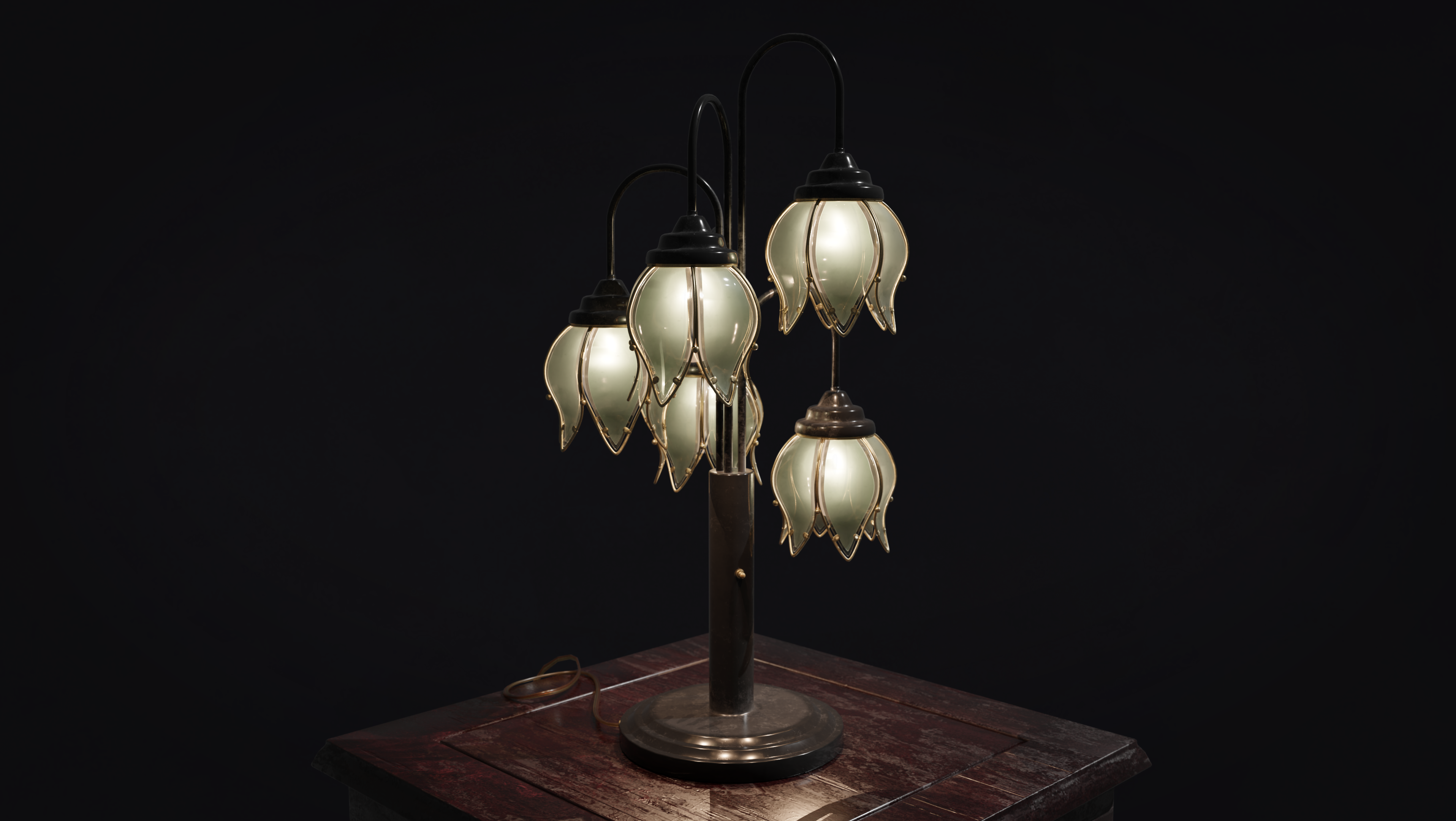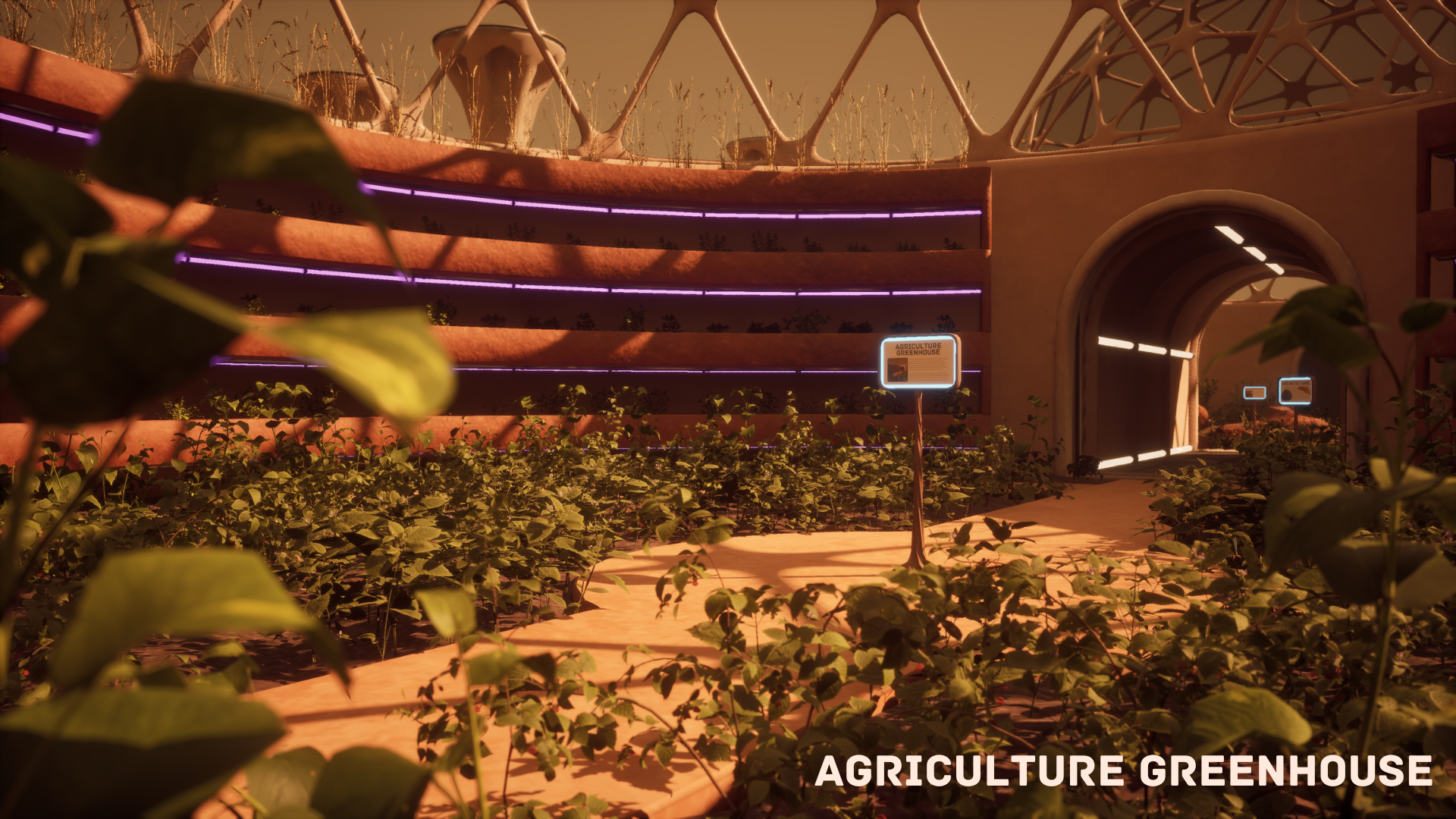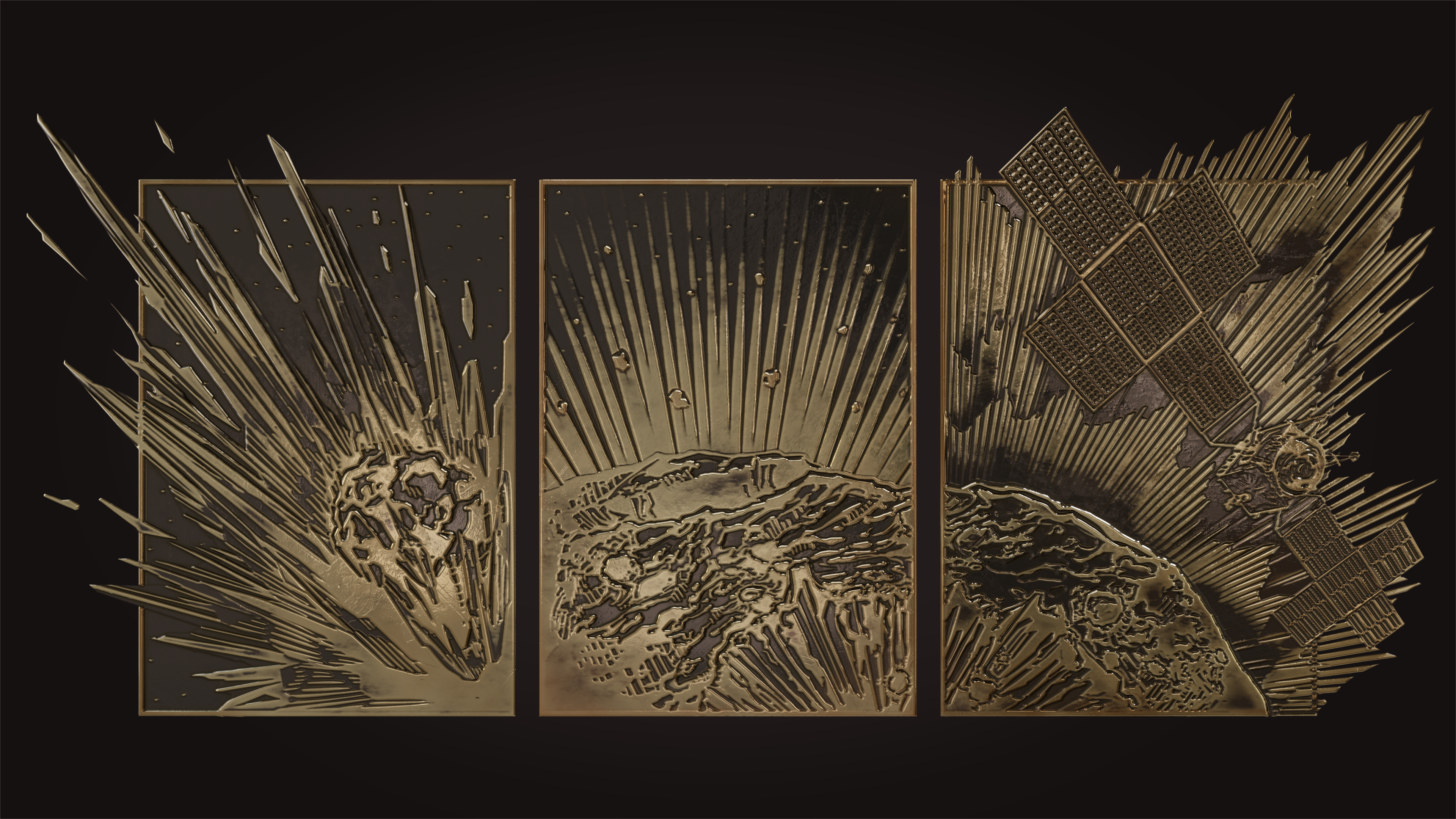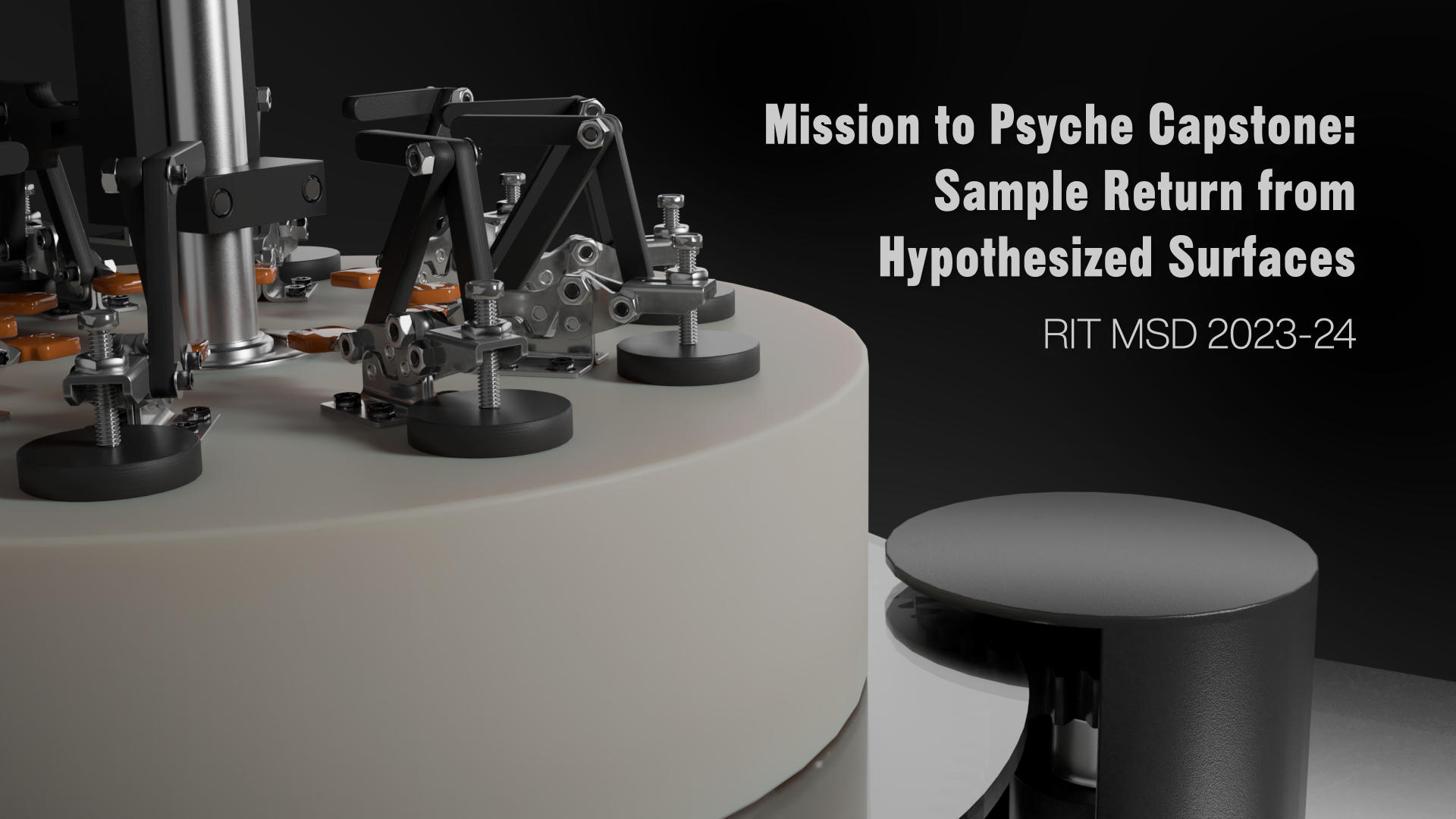For my senior capstone, I created an interactive scene intended to educate the player on six "forgotten" women of science. The goal of this project was to utilize storytelling elements and interaction to present information about the six chosen women in a way that is engaging and interesting to the player.
Software: Blender, Substance Painter, & Unreal Engine 5
Level Playthrough
The level begins with a cinematic of a museum tour group passing by a storage room. After the tour guide explains that the room holds culturally irrelevant and unimportant donations, one member of the group, who is also the player character, stays behind and decides to investigate while the rest of the group continues on into the museum's more valuable collections.
Inside the room, the player can interact with each woman's artifact. Each woman is represented by a collection of artifacts relevant to who she was and her most significant scientific contributions. When the artifacts are clicked on, one of the artifacts opens and the player can then interact with it to learn more about that specific woman.
Once the player has learned about all six of the women, another cinematic plays. The player character leaves the room and places a sticky note with the words, "Forgotten Women of Science", over the storage sign.
The majority of assets within the scene were fully modeled and textured by me, however, a number were also sourced from Quixel Megascans.
Environment Renders
The Women & Their Artifacts
Below are renders of each of the women's artifacts.
When each woman's artifact is clicked on, it will bring up information about them in a style similar to how that specific woman may have recorded information, which can also be seen below. I began by doing research into each woman (which turned out to be over 20 pages in total) and then condensing that down into the text seen below. The images below are the realistic renders that are used in the level.
Anna Atkins
Atkins was a British botanist who is most well known for her work using cyanotypes to catalog images of different plants and algae. She is represented with the supplies to create a cyanotype, including paper, a brush, chemicals, and plant specimens. Her information is presented in the form of cyanotypes.


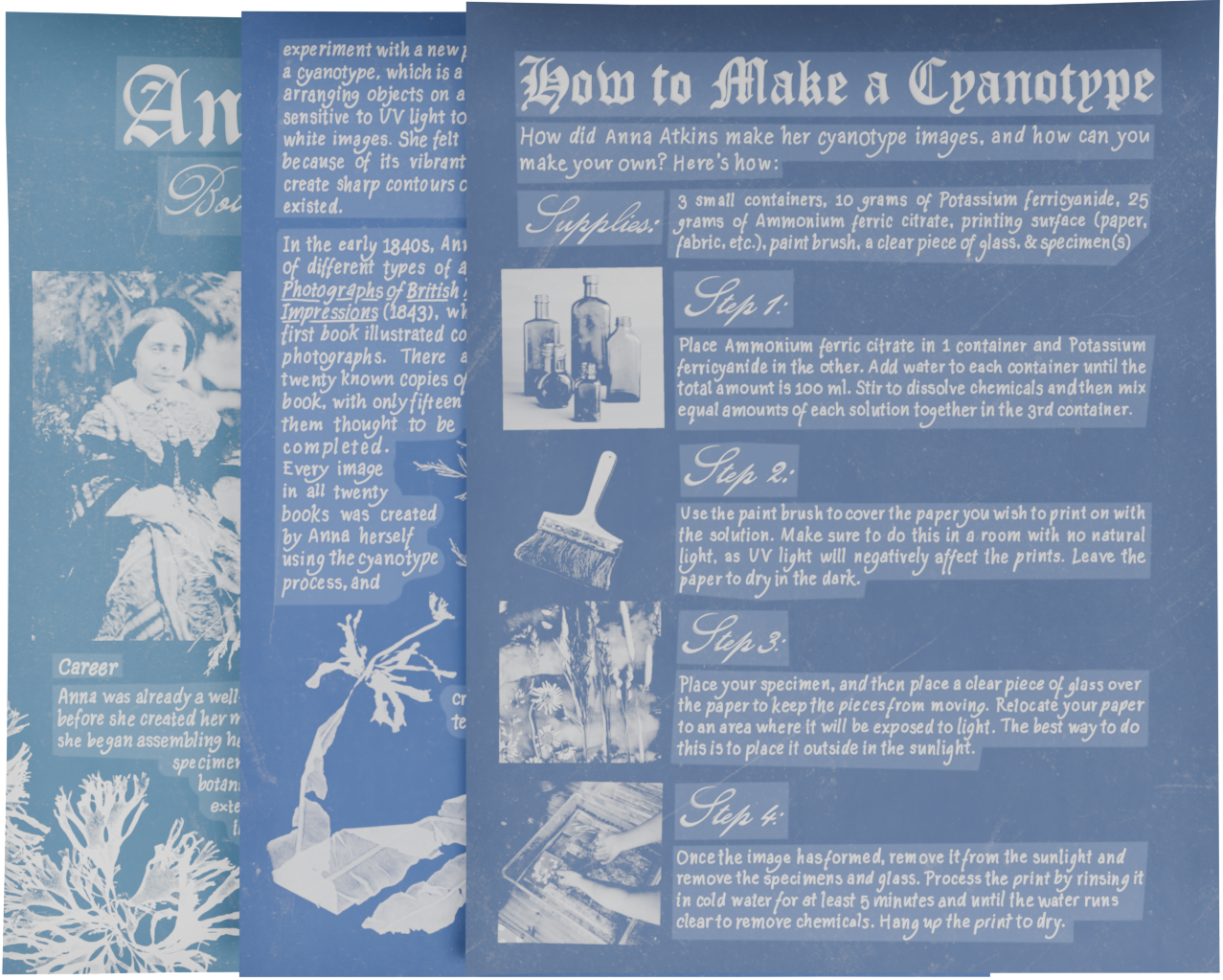
Bertha "Birdie" Parker
Parker is the first female indigenous archaeologist. She discovered a giant sloth skull located near man-made tools, which, at the time, were the oldest record of human existence in America. She is represented with the giant sloth skull and tools she discovered. Her information is presented in a journal filled with notes of digsites and artifacts.
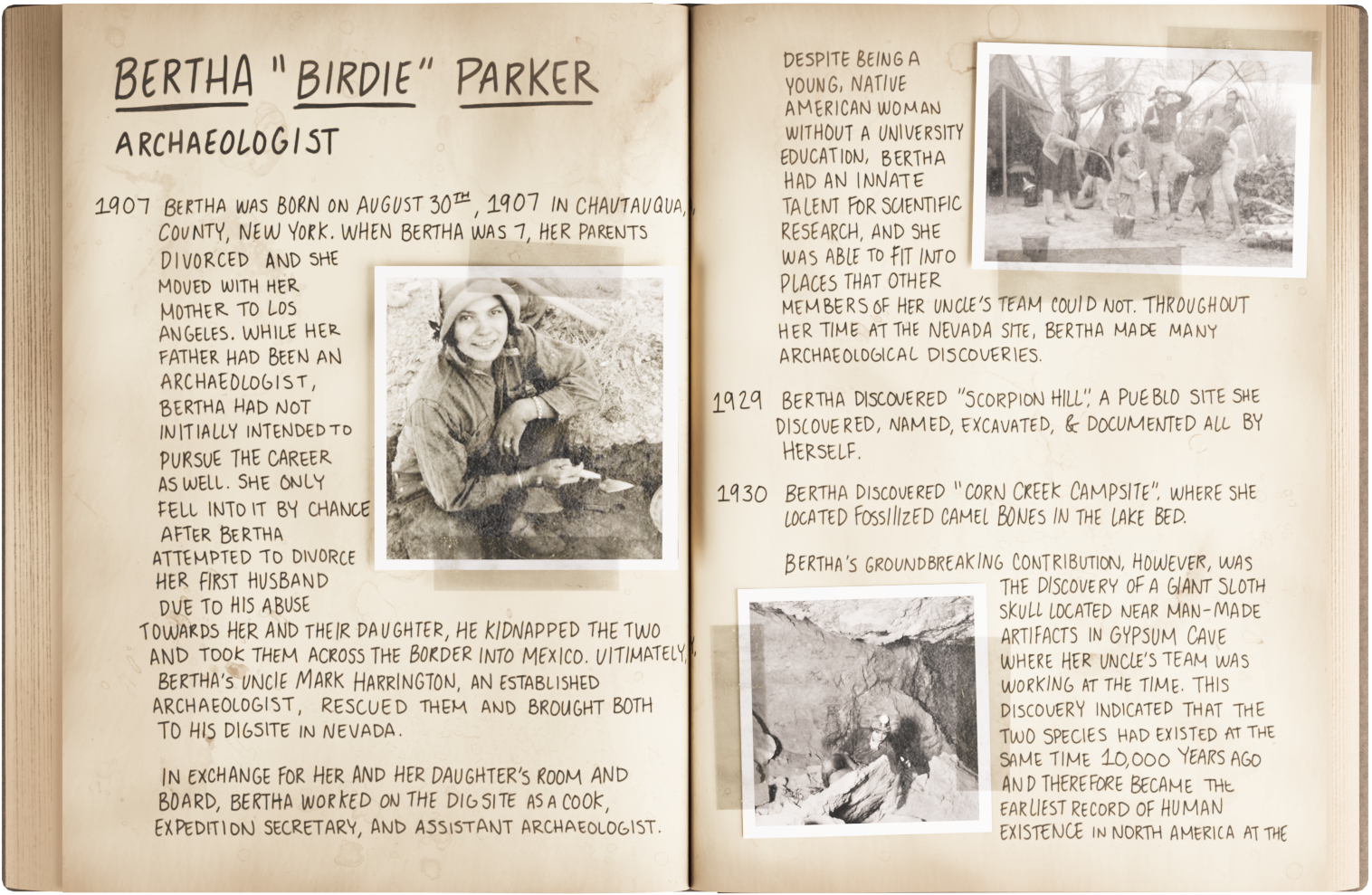


Vera Rubin
Rubin was an American astronomer who discovered proof of the existence of dark matter. During her life, Rubin collected many different types of globes, including ones of the Earth as well as celestial globes, which is what she is represented with. Her information is presented on a yellow notepad written in a blue ballpoint pen.

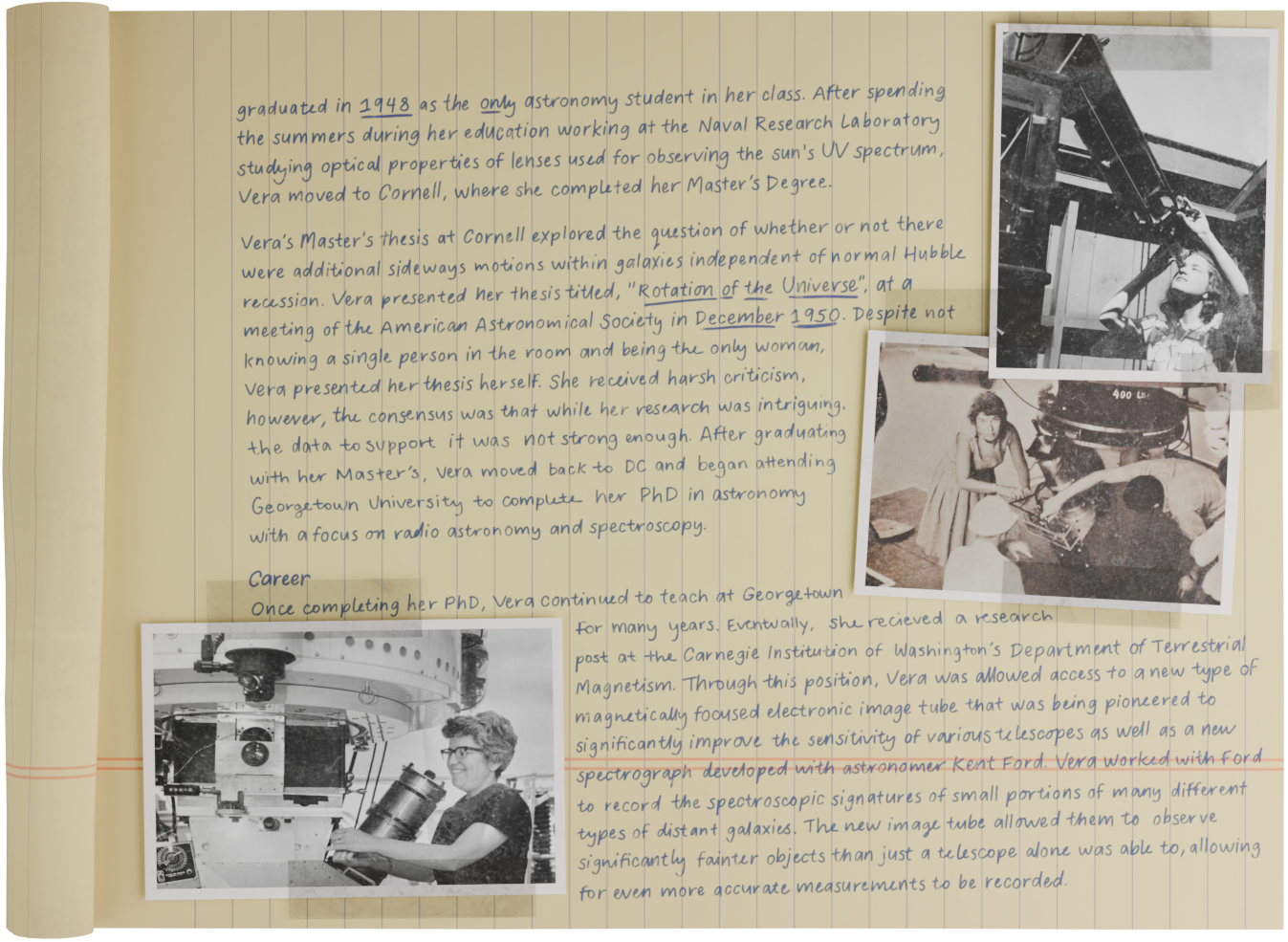

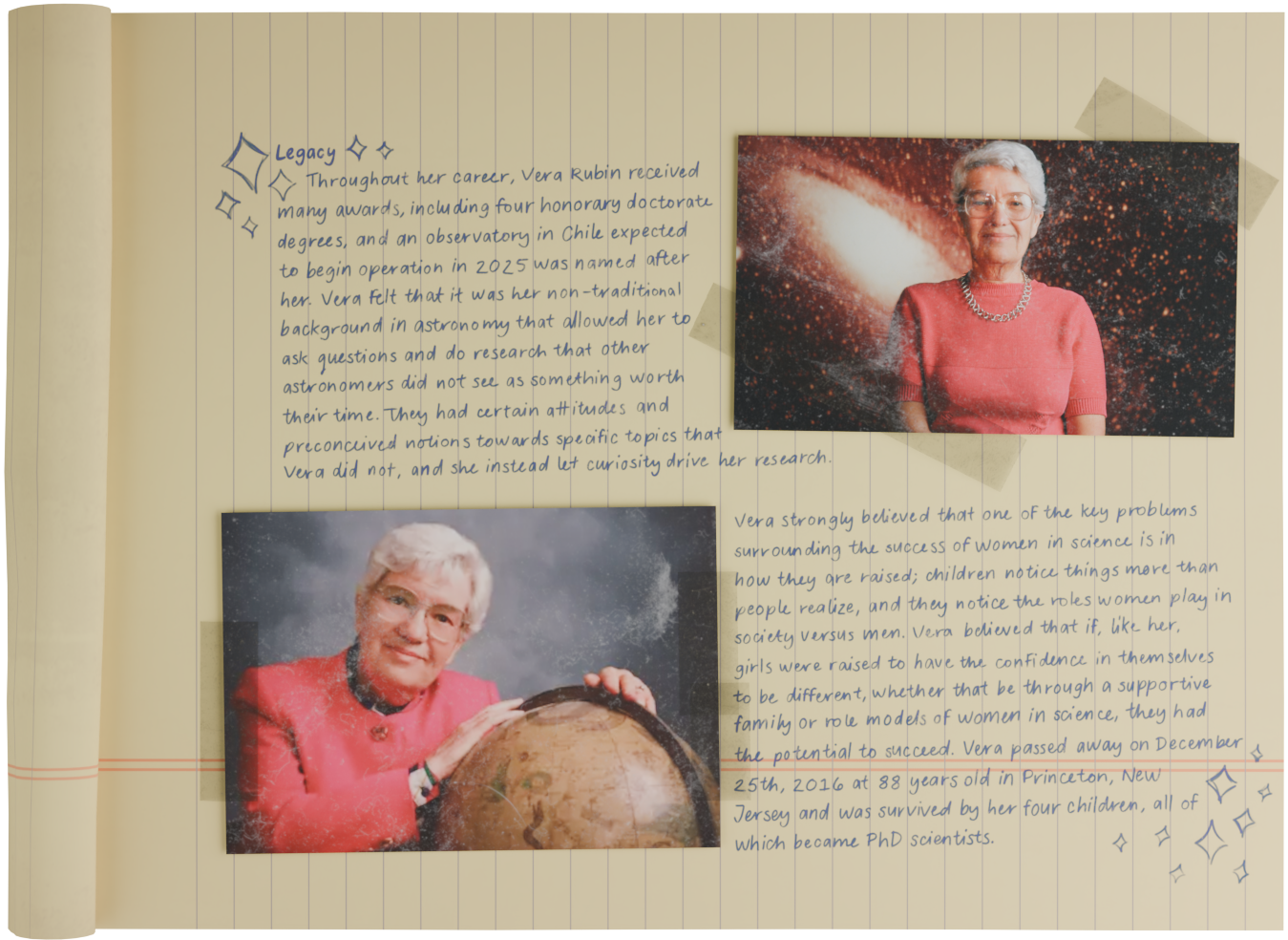
Gladys West
West is an American mathematician who developed geodesy models that were the basis for later development of the GPS. West worked on a number of important projects, so she is represented with a model of one of the satellites as well as a paper map because she preferred using them over GPS. Her information is presented in a similar form to a report she wrote.




Flossie Wong-Staal
Wong-Staal was a Chinese-American virologist who cloned the virus HIV and determined the function of its genes. She is represented with blood tests as well as a pair of shoes worn in ballroom dancing since later in her life, she became a competitive ballroom dancer. Her information is presented in the form of a lab report.



Chien-Shiung Wu
Wu was a Chinese-American physicist who developed the experiment to disprove a law of nature (parity) as well as worked on the Manhattan Project. Wu is represented by notes and a qipao (traditional Chinese dress). Her information is presented in a lab report and in handwritten notes.


Preproduction
To the left is the sketch of the environment from a top-down view. The room is meant to feel claustrophic and cluttered to emphasize the idea that the women's artifacts and accomplishments were thrown into the storage room and forgotten about and that this happened to many women, not just the chosen six.
Below are the sketches for each woman's artifacts.
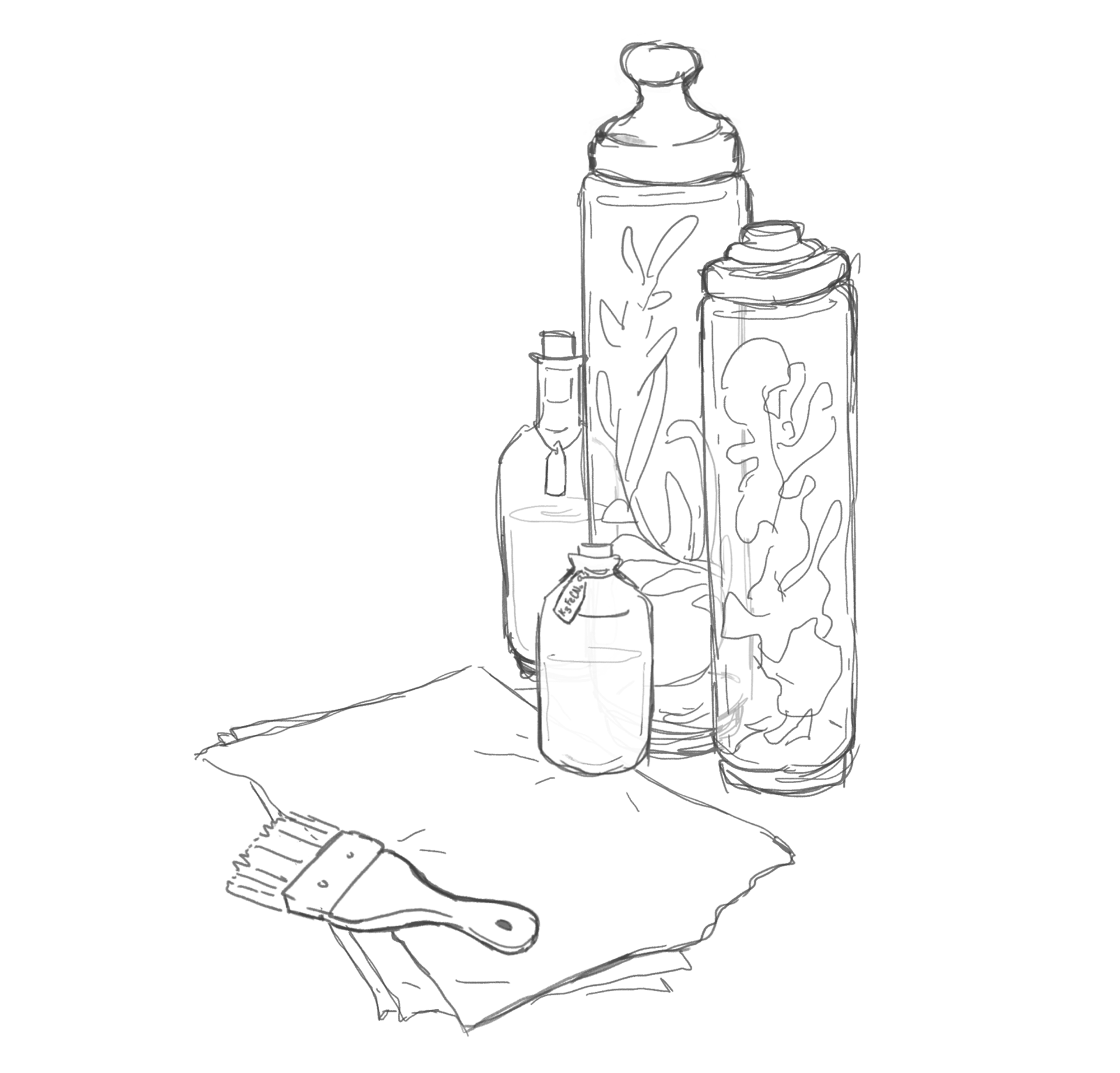
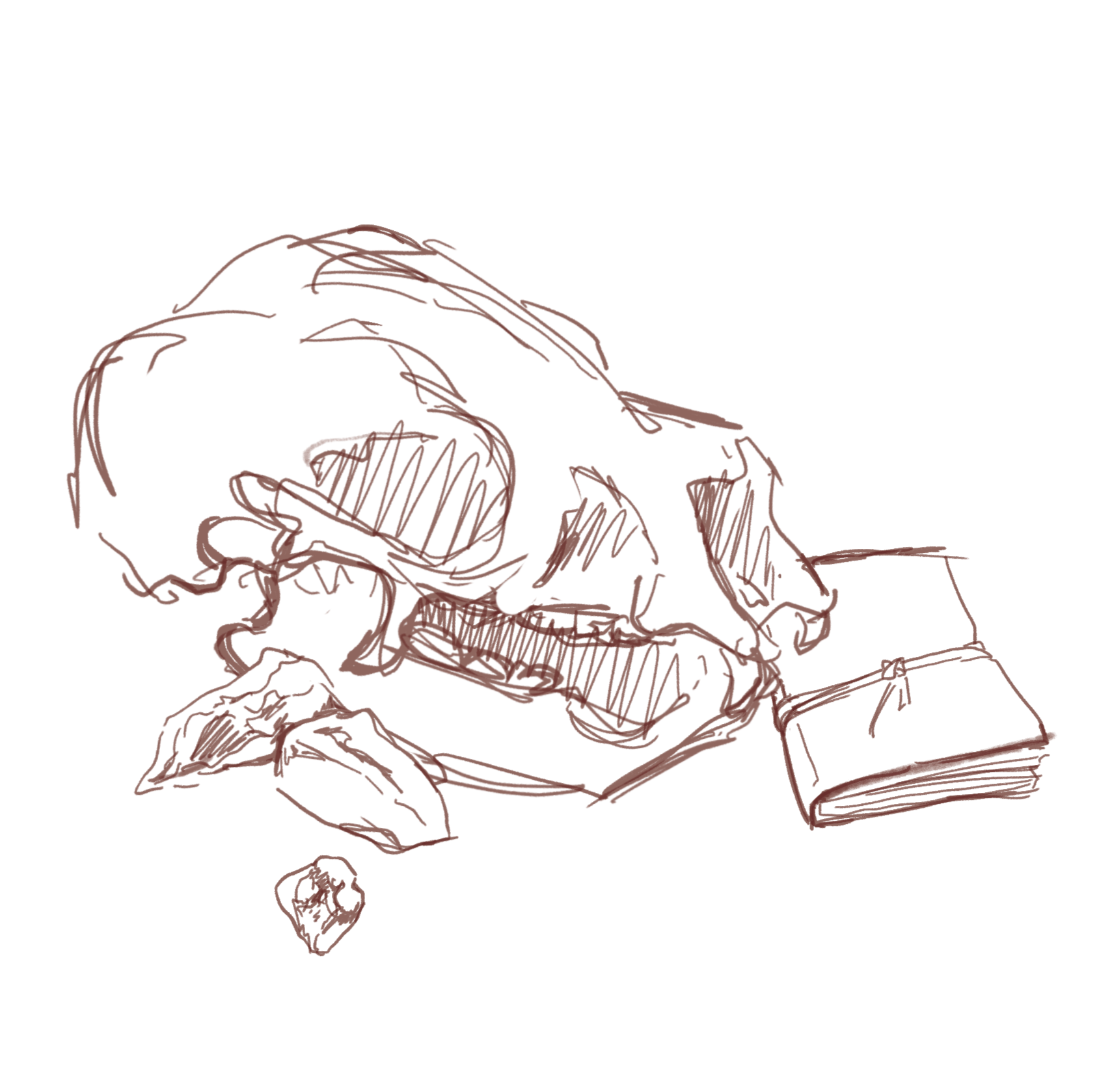
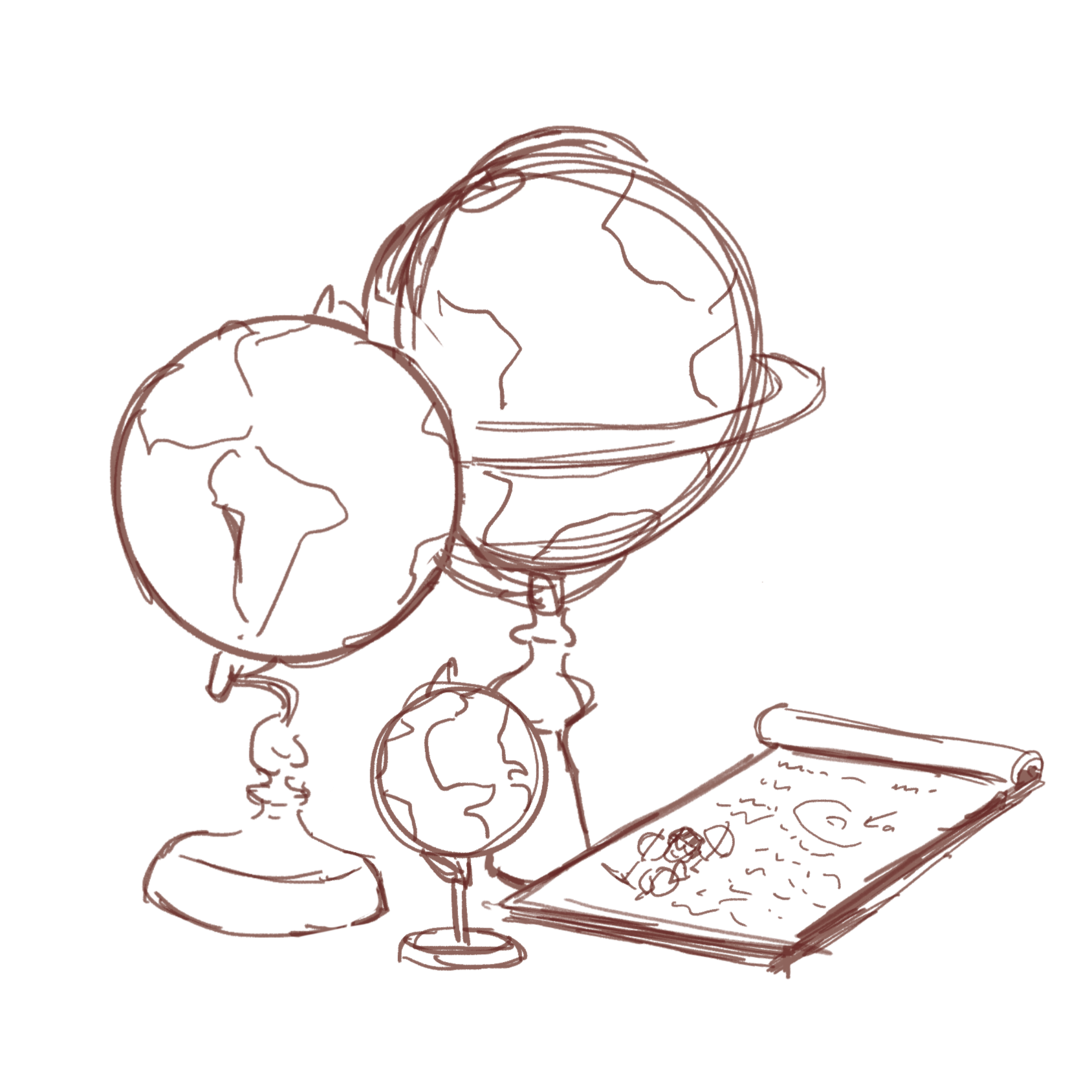

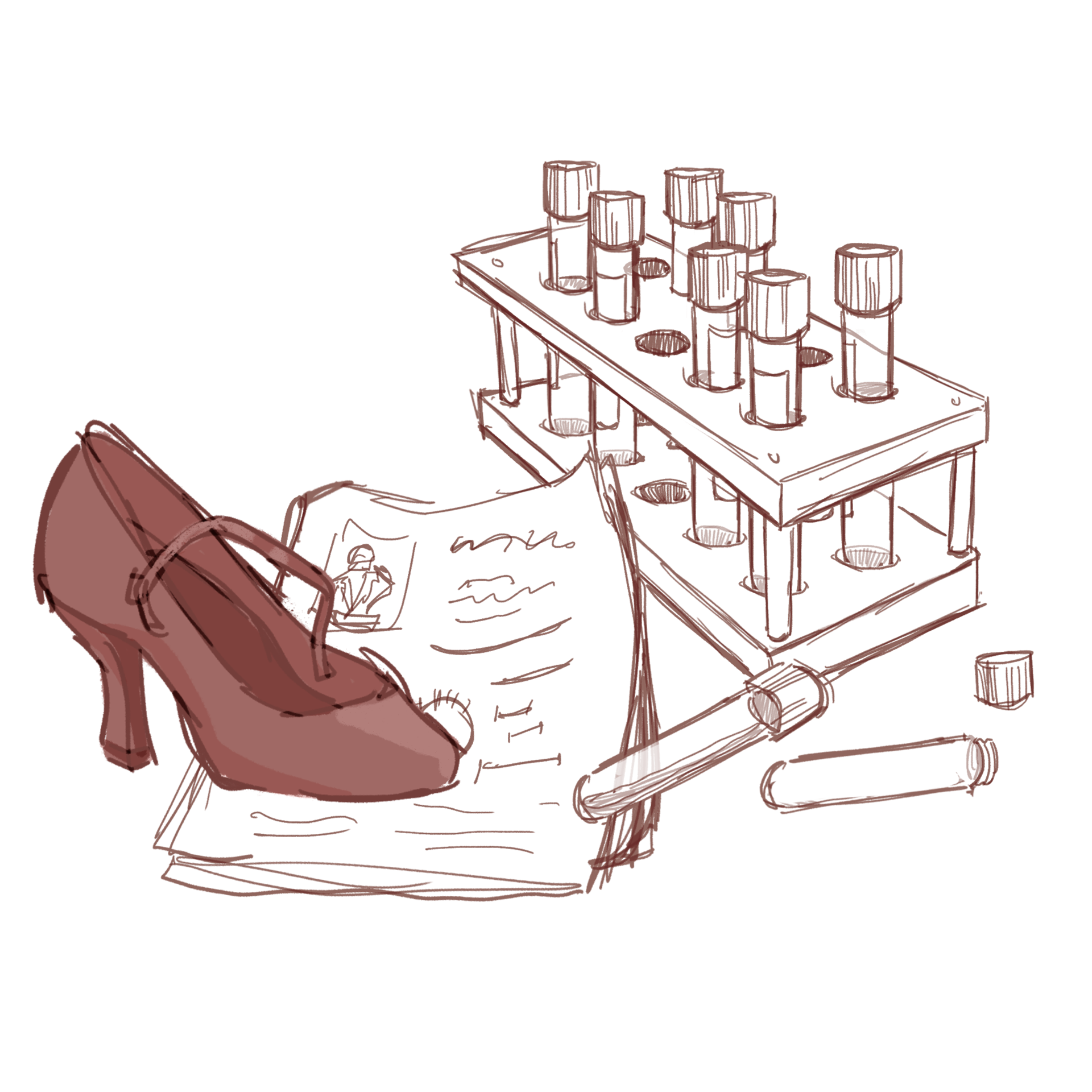

To the right are images of my main inspiration for the overall aesthetic of the environment. I took inspiration from real life natural history museums as well as office spaces filled with vintage and antique objects. To the bottom left are color palettes and specific furniture references, including measurements. To the bottom right are references for the museum storage that can be seen outside of the room.
Below are reference images for each specific woman.

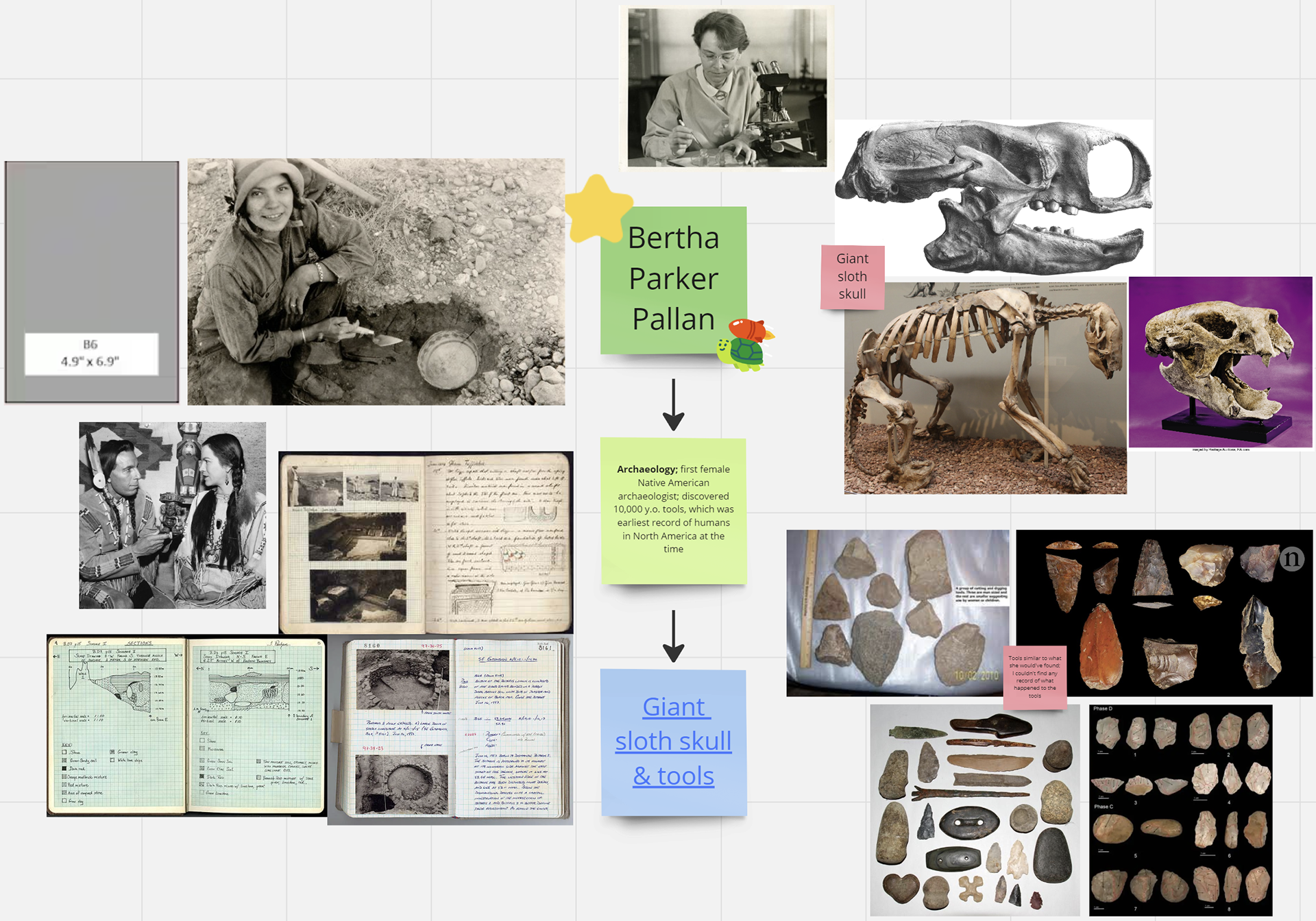
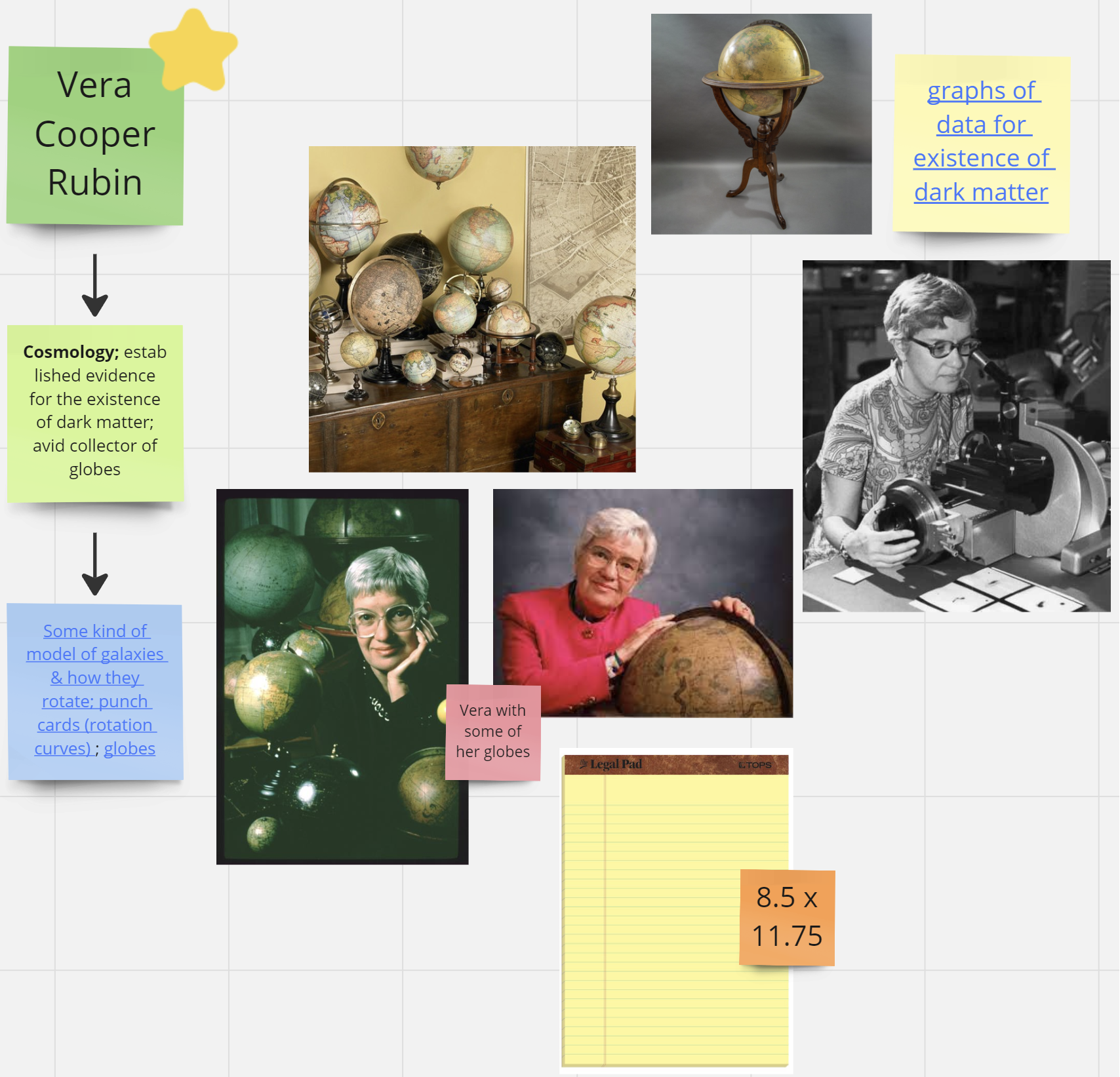



Blueprints
The above image shows the Blueprint for interacting with each artifact. When the user clicks, a linetrace is sent from the center of the screen, and if it hits an object with the tag "Artifact", it runs the functions "Open Artifact", which can be seen to the left. It checks to see which artifact was hit using tags for each woman. Depending on which women's artifact is hit, the Blueprint will cast to that specific artifact and create a widget with the information, as seen below. This process will likely be adjusted once animations are implemented for the artifacts displaying the information.
